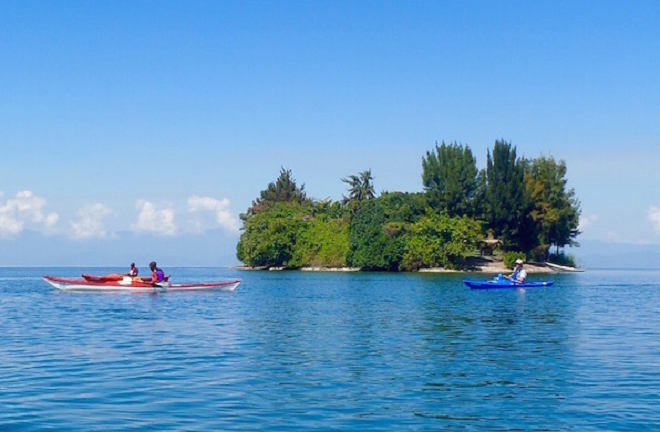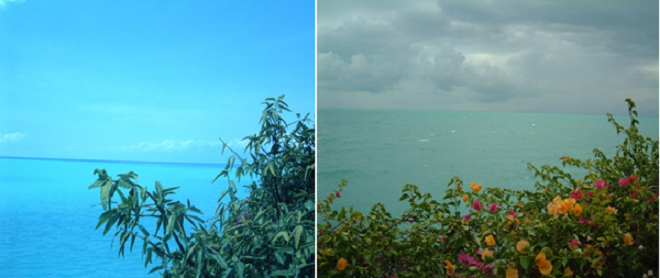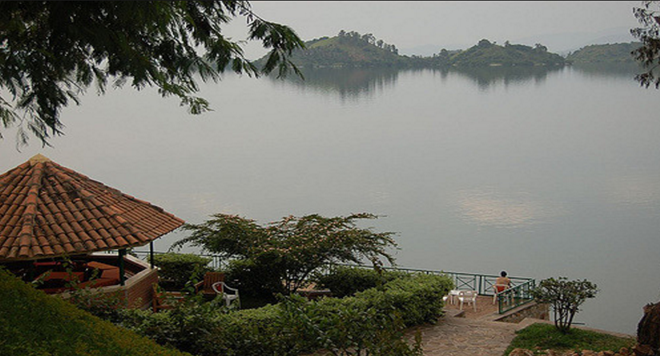In the past few weeks, Lake Kivu suddenly began changing colours. Residents on the shores have been taking selfies and sharing on social media.
Photos of the colour changing lake attracted several comments on social media and there was no sign that the lake waters would return to normality.
This caused panic. However, scientists have since laboured to explain why the lake water has been switching colours from blue to green and to pale white.
August Marie Christine Umutoni, the head of the Lake Kivu Monitoring Program (LKMP) told KT Press that people should not be worried. It is referred to as ‘lake whitening’, she said.
Umutoni said lake whitening is caused by weather changes. She said a similar occurrence in lake Kivu was reported in 2005 and 2013.
However, residents have mixed feelings about this rare phenomenon. They are worried considering this lake seats on massive deposits of methane gas which always spills negligible levels into the lake.
People around the lake are spreading several myths and fairy tales which continue to create a sense of fear.
But LKMP has been monitoring regularly the stability of the lake and the integrity of its ecosystem and the program’s experts have carried out investigations and analyses to understand and explain this phenomenon.
Reviews of some literature on the lake and consultation with external experts have also been done.
It has been concluded that the change of color of Lake Kivu is a natural, safe and reversible phenomenon called WHITENING. It happens in many lakes and it has happened on Lake Kivu before.
What is Lake Whitening?
Whitening occurs in many lakes in the world. It for example happened last year on Lake Geneva in Switzerland; it appears sometimes in Lake Ontario in Canada.
Lake whitening appears in hard lakes rich in carbonates, when water temperature and pH are high.
It occurs in Lake Kivu when the stratification of the surface waters is shallow. The current whitening of the lake actually started in March 2016.
When it started, the colour was grey and the water of the lake appeared milky. Now the lake looks more turquoise or green.
The meteorological conditions encountered on the lake since March (high air temperature, high humidity and high irradiance) favored this situation.
Observations made by the LKMP team revealed that the stratification is really shallow, 28m deep, with high water temperature and pH above 9.2.
In those conditions, the carbonates usually dissolved in the lake’s water are over-saturated and co-precipitate with calcium in the form of small calcite particles.
These particles are white, so it gives a milky or turquoise appearance to the lake’s water.
On the other hand, carbon dioxide gas present in water is consumed by green algae (Cynobacteria), which grow in the lake and make the water look green when observed from far.
This process is thus normal and reversible. Experts say it should last only a few weeks and, at the end of the rainy season, these calcite particles will simply sink and accumulate in the lake sediments.
They also say that lake whitening is a harmless phenomenon for people and for the local fauna and flora. Swimming, navigation and fishing are safe and still allowed.
Connection to climate/weather change?
Change of the color of the lake was triggered by specific weather conditions. It results from a shallow stratification of Lake Surface which triggers a calcite precipitation.
The deep stratification of the lake remained stable and deep waters did not mix with surface waters. Lake Kivu has not yet been affected by the global warming. The changes are normal weather changes.
However, what the experts insisted on is that, the lake’s whitening is not caused by the current extraction of methane gas nor by recent seismic and volcanic activities of Nyiragongo and Nyamulagira as many had suspected.




